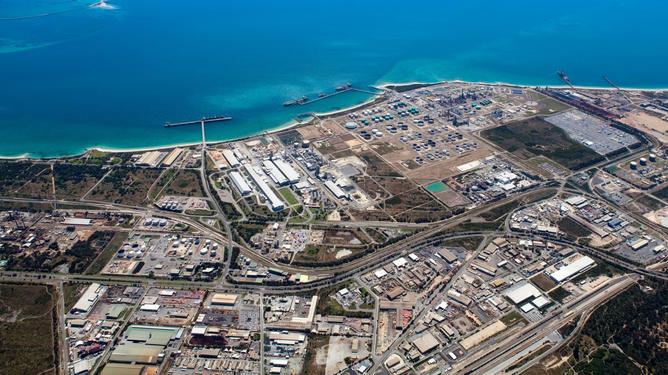Australia’s first gas-to-hydrogen pipeline transition to feed ammonia production near Perth
By Julian Atchison on May 17, 2022

Click to learn more. WesCEF’s existing ammonia production plant at Kwinana near Perth. Source: Perth Now/Airview Aerial Photography.
Australia’s largest gas infrastructure organisation APA Group and Wesfarmers Chemicals, Energy and Fertilisers (WesCEF) have signed a new MoU to investigate the potential of feeding renewable hydrogen to WesCEF’s ammonia production facilities in Kwinana. The feed would be via a converted section of APA’s existing Parmelia Gas Pipeline.
Last year APA embarked on an exploratory study to determine if sections of Parmelia could successfully be converted to carry 100% hydrogen, and the new MoU will seek to advance & implement some of that research. If successful, the 416km-long Parmelia pipeline could eventually become a “pure renewable hydrogen service”.
Kwinana
WesCEF subsidiary CSBP operates the existing ammonia production plant in Kwinana, with a production capacity of 255,000 tonnes per year and a storage capacity of 40,000 tonnes. Amongst a series of proposed projects, plans are in motion for two relevant facilities in the Kwinana industrial zone:
- In October last year, Woodside announced a AU$1 billion hydrogen and ammonia production facility. The H2Perth project will reportedly utilise purchased renewable electricity and forestry offsets to maintain carbon neutrality.
- And last month bp received $70 million in government funding for its H2Kwinana project: an industrial hydrogen hub featuring at least 75 MW of electrolysers. bp is shuttering operations at its existing oil refinery in Kwinana, and will pivot to fuel imports and hydrogen-based applications (such as ammonia) at the site.
Mega-projects to the north, a renewable hydrogen target for WA
The Parmelia gas pipeline begins at gas fields near Dongara, several hundred kilometers north of Perth. But the energy geography of the area is shifting. Further north from Dongara near the city of Geraldton, bp is currently developing the Geraldton Export-Scale Renewable Investment (GERI) project, with plans to produce and export 1 million tonnes of renewable ammonia per year. Also near Geraldton, Strike Energy is also planning a newbuild urea production, in a bid to reduce Australia’s reliance on imports.
A few hundred kilometers further up the coastline near Kalbarri, Copenhagen Infrastructure Partners are leading the Murchison mega-project (with more project details emerging last week). And all this is before we move even further north to Gascoyne or the Pilbara, where world-scale projects like the Asian Renewable Energy Hub are being developed. The pipeline of mega-projects in Western Australia is impressive, to say the least.
Also this month, Western Australia Minister for Hydrogen Industry Allanah MacTiernan announced that the state government would be investigating a potential renewable hydrogen target. Electricity retailers in WA would be set procurement targets for hydrogen-fueled electricity, with scope to widen the scheme to other industries & hydrogen applications (like ammonia).